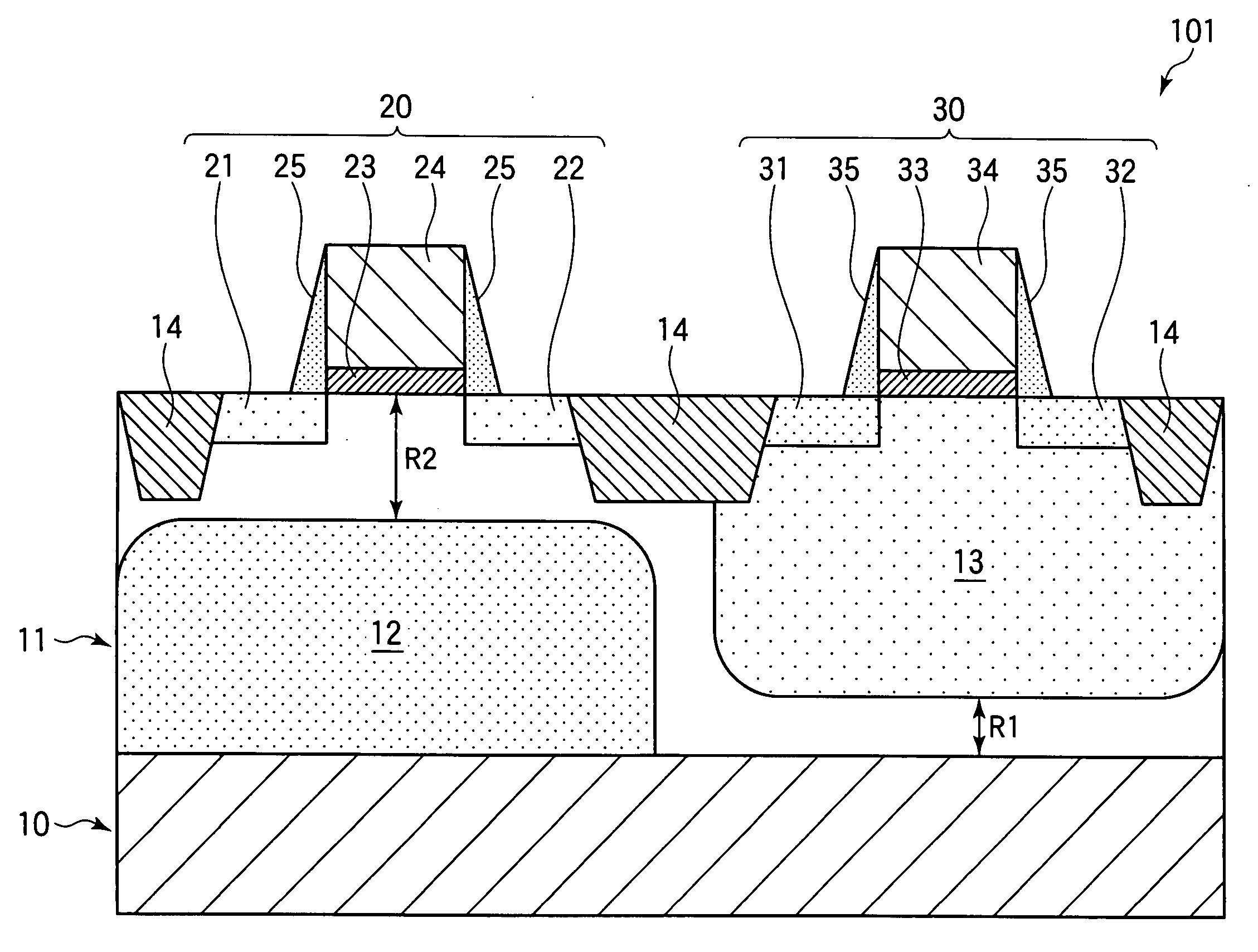Semiconductor memory device using hot electron injection
a memory device and semiconductor technology, applied in semiconductor devices, solid-state devices, instruments, etc., can solve the problems of unsolved degraded programming characteristics and inability to redu
- Summary
- Abstract
- Description
- Claims
- Application Information
AI Technical Summary
Benefits of technology
Problems solved by technology
Method used
Image
Examples
Embodiment Construction
[0020]An embodiment of the invention will now be described with reference to the attached drawings, in which like elements are indicated by like reference characters.
[0021]Referring to FIG. 1, the embodiment is a semiconductor memory device 101 including a memory cell transistor 20 and a peripheral circuit transistor 30. Although the semiconductor memory device 101 includes an array of memory cell transistors 20, only a single memory cell transistor is shown for simplicity. The peripheral circuits of the semiconductor memory device 101 include a plurality of both p-channel metal-oxide-semiconductor (PMOS) transistors and n-channel metal-oxide-semiconductor (NMOS) transistors, which are used for reading and programming data in the memory cells, but only a single PMOS transistor is shown for simplicity. Other necessary structures, such as interlayer dielectric films, contact holes, metal interconnections, and a passivation layer are omitted from FIG. 1 as they are well known.
[0022]The...
PUM
 Login to View More
Login to View More Abstract
Description
Claims
Application Information
 Login to View More
Login to View More - R&D
- Intellectual Property
- Life Sciences
- Materials
- Tech Scout
- Unparalleled Data Quality
- Higher Quality Content
- 60% Fewer Hallucinations
Browse by: Latest US Patents, China's latest patents, Technical Efficacy Thesaurus, Application Domain, Technology Topic, Popular Technical Reports.
© 2025 PatSnap. All rights reserved.Legal|Privacy policy|Modern Slavery Act Transparency Statement|Sitemap|About US| Contact US: help@patsnap.com



